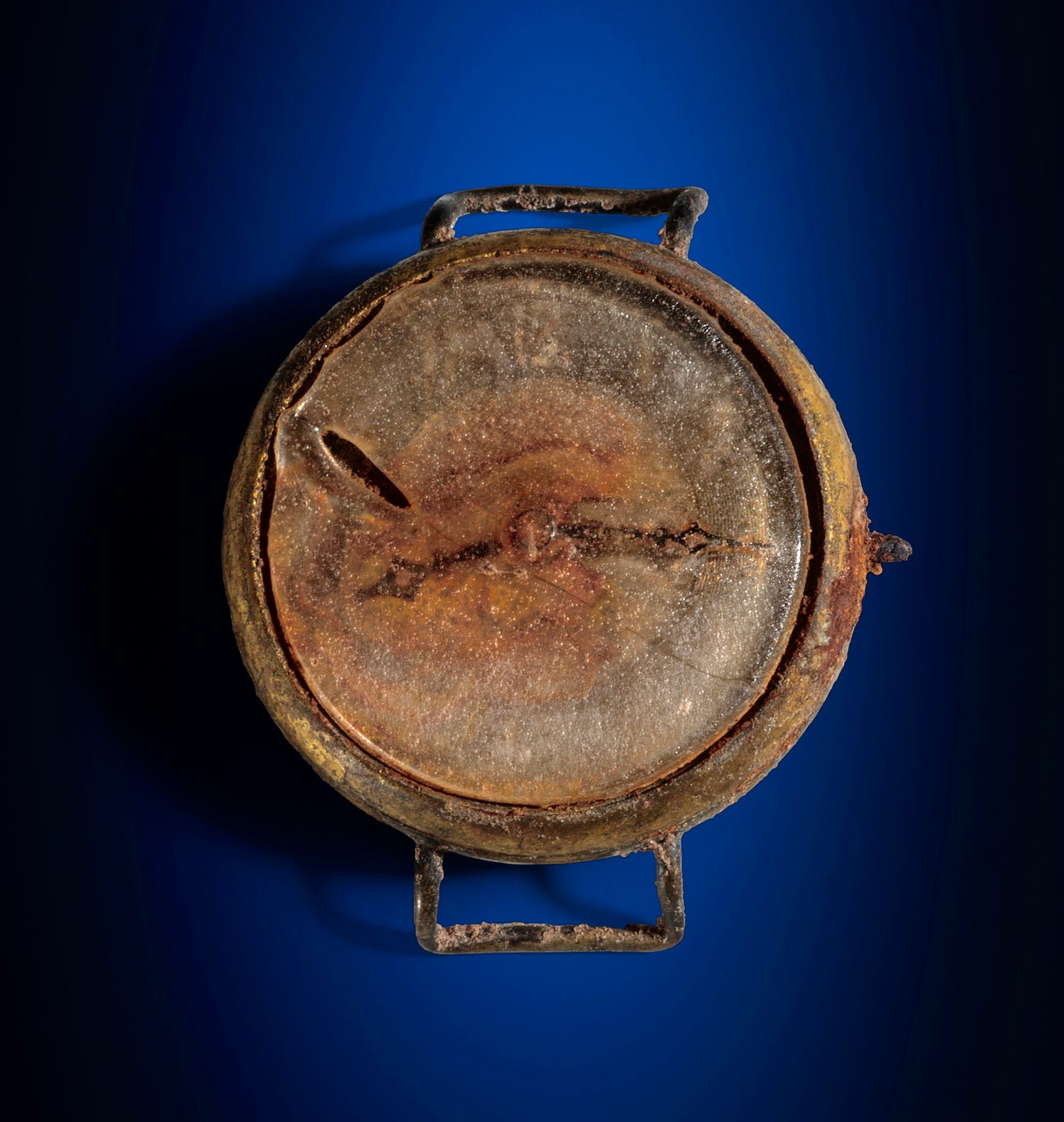Greg Mitchell is the author of more than a dozen books, including three related to The Bomb, and now writer/director of three recent films, including the multiple award-winning“Atomic Cover-up” and “Memorial Day Massacre” which are still up at PBS.org. You can still subscribe to this newsletter for free.
You may be surprised—perhaps appalled or disgusted—that the object pictured above was sold at auction this week like any rare comic book, baseball card or painting by a past master. It is a burned, partly melted wristwatch, its hands permanently frozen in time. That time is just after 8:15, that precise moment in the morning when the first atomic bomb exploded over Hiroshima, dooming 150,000 (about eighty percent of them civilians) to death.
It drew a top bid of just over $31,000, exceeding its estimate of $20,000+. The “winner” is unknown. Putting it on the block, solely online, was RR Auction, based in Amherst, NH. It was lot #428 with its listing topped with this:
Hiroshima Atomic Bombing: Melted Wristwatch with Detonation Time of 8:15 AM
It's about time – rare surviving wristwatch from the blast zone of the Hiroshima bombing, frozen at the moment of detonation
From the description below that: “The bomb destroyed roughly three-quarters of the city and killed tens of thousands of Japanese citizens, including, presumably, the original owner of this timepiece.”
Then there’s this:
The consignor affirms he had been informed a British soldier recovered this watch when he was dispatched to Hiroshima to provide emergency supplies and survey post-conflict reconstruction requirements while at the Prefectural Promotion Hall in Hiroshima. In 2015, an anonymous collector offered it for sale at the JP Humbert auction house in England. It was purchased and eventually sold to the consignor.
Asked for a comment on the sale, Bobby Livingston, executive vice president at RR Auction, said, “It is our fervent hope that this museum-quality piece will stand as a poignant educational symbol, serving to not only remind us of the tolls of war but also to underscore the profound, destructive capabilities that humanity must strive to avoid.”
The same auction house had previously sold:
—A sake bottle melted by the same bomb blast, for $14,000.
—10 photographs of the post-bomb destruction from the collection of a crew member of the Enola Gay, Robert Lewis, which earned $5000. Lewis, as I’ve written more than once, was one of the few participants in the bombing raid who ever expressed regrets about his role, including one time, in tears, on national TV.
—A roof tile burned by the atomic blast taken off a Hiroshima temple, which drew only $1251.
Selling Hiroshima and Nagasaki artifacts is nothing new, but seems to be a growing field. Often the items are photos of the mushroom cloud or drawings autographed by proud crew members. One of the leading auction houses, Heritage, has sold many objects. A log book from the flight to Hiroshima—also by Lewis—went for $543,000 two years ago. A Heritage spokesman boasted:
"You have eight pages of his thoughts...hour-by-hour, minute-by-minute of exactly what happened...on the plane ride to Hiroshima…And then they dropped the bomb. And he literally writes: 'There will be a short intermission while we bomb'...It is incredibly significant...words can't describe what you feel when you hold this thing in your hands. Something that witnessed the dawn of the nuclear age.
Heritage also sold, for $77,000, a copy of the official press release announcing the bombing of Hiroshima, signed by President Truman. With its misleading statements about the bombing, setting the tone for the use of the horrific weapons—then and potentially now—it is one of the most significant statements of our era, as I have written here.
Reports of the Thursday sale of the wristwatch frozen in time drew wide condemnation via Twitter, with many demanding that the new owner donate the item to the Hiroshima Peace Museum (I saw several other watches there on my visit) or another suitable destination. The Twitter feed for the venerable Arms Control Association declared: “Appalling that this U.S. auction house and a seller are seeking to profit from a stolen artifact from a victim of the first mass slaughter of civilians using a nuclear weapon.”
A comment by another: “This watch should not be sold for profit. The person who owned this watch died in maybe the worst war crime imaginable. Have some humanity. The watch belongs in the Hiroshima Peace Memorial Museum. It's not too late to do the right thing.”
For context, watch my film Atomic Cover-up, for free at PBS.org. or via Kanopy. Companion book here.





I’m being read by a voice over artist on medium
I’m not sure I understand